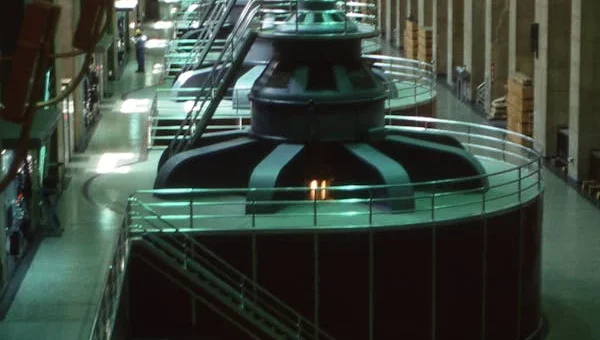
Introduction
As the aviation industry grapples with climate change and the push for decarbonization, hydrogen has emerged as one of the most promising alternatives to fossil fuels. But the question remains: can hydrogen power the next generation of aircraft? In this in-depth article, we explore the science, technology, benefits, challenges, and future prospects of hydrogen-powered aviation.
1. Understanding Hydrogen as an Aviation Fuel
Hydrogen is the lightest and most abundant element in the universe, and it offers several compelling advantages when considered for aviation.
a. What Makes Hydrogen Appealing?
Hydrogen has a high energy content by weight, making it an attractive fuel source for aircraft.
- Energy density by weight: 120 MJ/kg (3x higher than jet fuel)
- Emits only water vapor when used in fuel cells
- Can be produced from renewable energy sources (green hydrogen)
However, hydrogen’s energy density by volume is low, requiring advanced storage solutions.
b. Hydrogen Storage Methods
Hydrogen can be stored and used in several forms, each with pros and cons:
| Storage Type | Description | Pros | Cons |
|---|---|---|---|
| Compressed Gas | Stored under high pressure (350–700 bar) | Simpler tech | Large tank volume needed |
| Liquid Hydrogen | Cooled to -253°C | Higher density | Requires cryogenic systems |
| Chemical Carriers | Bound to other compounds (e.g., ammonia) | Easier transport | Complex conversion |
These storage challenges are central to the design of hydrogen-powered aircraft.
2. Current Hydrogen Aircraft Technologies
While hydrogen-powered commercial jets are not yet flying, various prototypes and concepts are under development.
a. Fuel Cell vs. Hydrogen Combustion
Two main approaches exist for utilizing hydrogen in aviation:
- Fuel Cell Aircraft: Converts hydrogen into electricity to power electric motors
- Hydrogen Combustion: Burns hydrogen in modified gas turbines, similar to jet fuel
Comparison:
| Technology | Efficiency | Emissions | Complexity |
| Fuel Cell | Higher (~50%) | Water vapor only | New propulsion systems |
| Combustion | Lower (~30-40%) | Water + some NOx | Easier retrofit of engines |
b. Aircraft Prototypes and Demonstrators
Several manufacturers and startups are already testing hydrogen aircraft:
- ZeroAvia: 19-seat aircraft flying with fuel cells since 2020
- Airbus ZEROe: Conceptual hydrogen-powered aircraft planned for 2035
- H2Fly: Successfully tested liquid hydrogen-powered electric flight in 2023
These projects show hydrogen’s potential viability in regional aviation first, with long-haul applications in the future.
3. Benefits of Hydrogen-Powered Aircraft
Transitioning to hydrogen aviation could unlock major advantages in sustainability and performance.
a. Environmental Impact
The most compelling benefit is emissions reduction:
- Zero CO2 emissions during operation
- Minimal particulate matter and sulfur emissions
- Lower noise due to electric propulsion in fuel cell aircraft
When produced from renewable sources, hydrogen becomes a truly clean energy carrier.
b. Energy Efficiency and Operational Costs
Hydrogen can offer long-term operational advantages:
- Lower fuel consumption per unit of energy compared to jet fuel
- Reduced dependence on volatile oil prices
- Potential for local hydrogen production at airports
Over time, hydrogen aircraft may become more cost-effective despite higher upfront development costs.
4. Challenges and Limitations
Despite the promise, several technical and economic barriers must be overcome.
a. Storage, Infrastructure, and Aircraft Design
Hydrogen’s physical properties require substantial adaptation in aircraft design:
- Larger fuel tanks reduce passenger or cargo capacity
- Cryogenic storage adds weight and complexity
- New refueling infrastructure needed at airports
| Challenge | Impact |
| Volume | Requires more space than kerosene |
| Temperature | Liquid hydrogen needs -253°C systems |
| Logistics | Airport pipelines, storage tanks, and safety systems |
b. Regulatory and Safety Hurdles
New technologies face scrutiny before entering commercial service:
- Regulatory bodies must develop hydrogen aviation standards
- Public perception and safety concerns must be addressed
- Certification timelines for hydrogen aircraft may be longer than conventional designs
These hurdles could delay hydrogen’s mainstream adoption by a decade or more.
5. Hydrogen vs. Other Sustainable Aviation Fuels (SAFs)
Hydrogen isn’t the only pathway to greener aviation. It must compete with other solutions.
a. SAFs, Batteries, and Hybrid Systems
| Technology | Pros | Cons |
| SAFs | Drop-in replacement | Still emits CO2 |
| Electric/Batteries | Zero emissions | Short range due to weight |
| Hydrogen | Clean & scalable | Infrastructure challenges |
Hydrogen excels in long-term sustainability but lags behind SAFs in immediate deployment readiness.
b. Strategic Role in Future Aviation
Hydrogen is likely to complement rather than replace other technologies:
- Short-haul: Electric and fuel cell aircraft dominate
- Medium-haul: Hydrogen combustion gains traction
- Long-haul: SAFs and hybrid solutions remain competitive until hydrogen scales
Aircraft manufacturers may adopt hybrid approaches combining hydrogen with electric or jet propulsion.
Conclusion: A Promising Flight Path Ahead
So, can hydrogen power the next generation of aircraft? The answer is increasingly yes—but not without significant effort. Hydrogen offers immense potential for decarbonizing aviation, especially when produced sustainably. It enables a future of clean, quiet, and efficient air travel.
Yet, the road ahead involves overcoming engineering, economic, and regulatory barriers. Full-scale adoption will require coordinated action across governments, manufacturers, airports, and fuel producers.